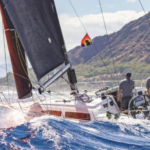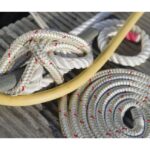Many people assume that once they’ve purchased a yacht, fixed up anything below their standards, and obtained all the necessary safety and navigation gear that they’re set and ready to go. For some people this may be true, but for many a dedicated yacht tender or dinghy is invaluable. A tender allows you to get on the water quickly without the hassle of taking the yacht out of the marina, something best left for longer voyages. A tender can get you onto the bay to see the sunset within minutes, onto shore quickly if you’re on a mooring ball and need supplies, or to another marina to visit a friend without setting foot on land. These small craft have infinite utility, but choosing one can be tricky.
The easiest and most reliable version of tender to buy is a RHIB or RIB, a rigid hulled (inflatable) boat. These boats are safe and easy to pilot and dock due to their inflatable sides, comfortable in waves because of their shock absorption, easy to maintain, and difficult to damage. However, there are a few different factors to consider once you’ve decided to purchase one.
The first and most immediate thing to consider is size, especially if you plan on storing your tender on your yacht when you’re gone or during long voyages. Most decently sized motor yachts have a davit with which the skipper can load and secure the tender, and the largest yachts have tender garages located near the stern. Those who own smaller yachts or sailboats should ask their marina manager if docking a tender in your slip alongside your vessel is allowed. In any of these situations, it’s necessary to carefully measure the space where you’ll be keeping your smaller craft.
Next, consider what sort of power you want your tender to have. If you’re just planning on using it to ferry yourself and your guests in between your yacht and the shore or other vessels, any reliable outboard should suffice. But, if you plan on towing inflatables or other water toys, a beefier engine might be required.
Finally, when you buy your tender you need to ensure that it follows all USCG rules. Even tenders must have their registration numbers clearly displayed, a PFD for every soul aboard, a visual distress indicator, navigation lights, and a fire extinguisher. In my opinion, it’s good practice to keep a simple foot pump onboard at all times too, in case one of your pontoons needs emergency reinflating. Follow these tips, and you’ll have a safe and worry-free tender experience.





